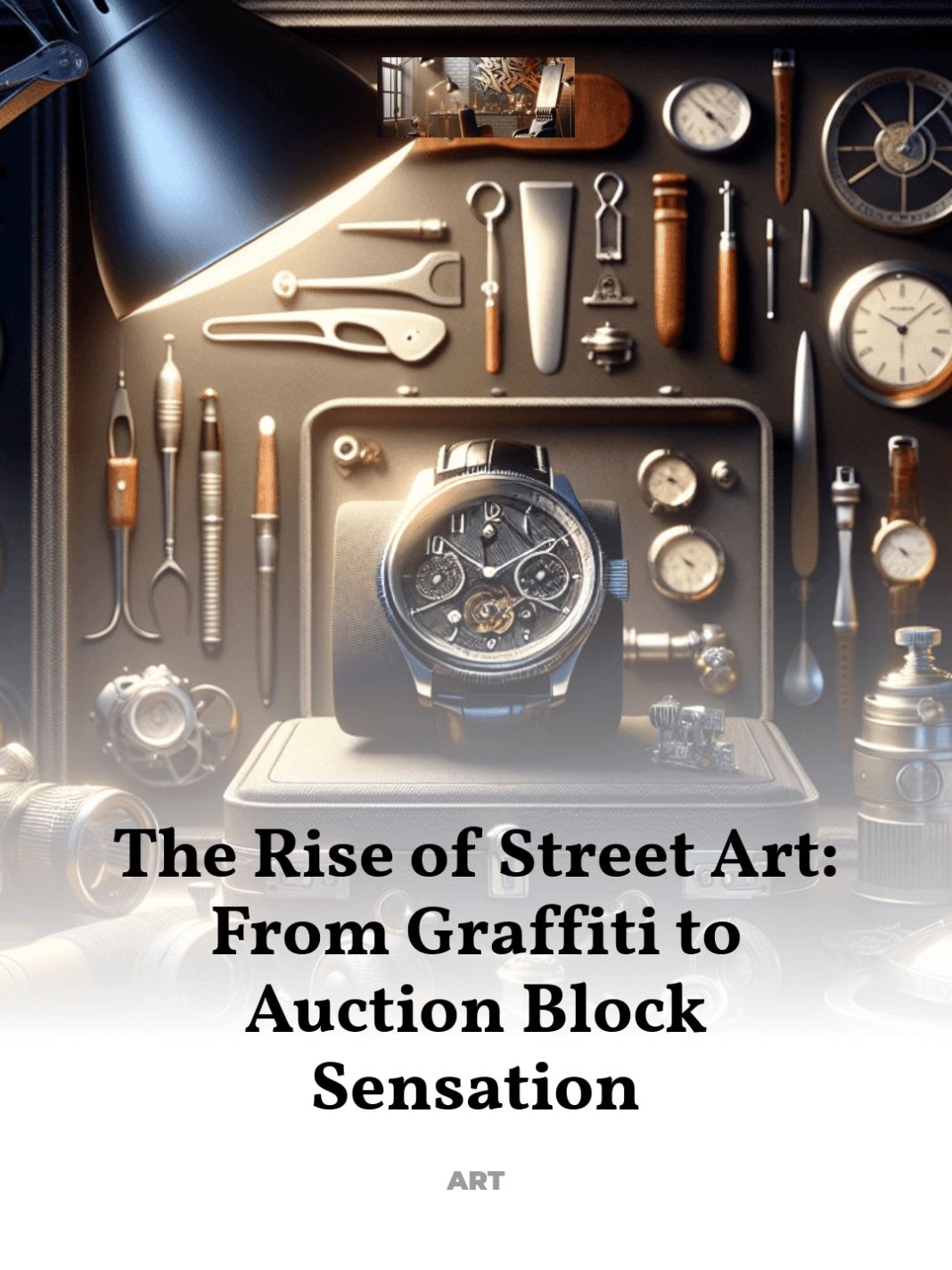How artists like Banksy and KAWS transformed urban culture into high-value art
Once relegated to the shadows of urban landscapes, street art has ascended to the prestigious galleries and auction houses of the world. This transformation is not just a change in location but a redefinition of value, culture, and art itself.
- The Origins of Street Art: A Rebel’s Canvas
- Cultural Shift: Street Art Enters the Mainstream
- Key Figures: Banksy and KAWS
- The Artistic Value and Craftsmanship of Street Art
- Global Influence and Future Prospects
The Origins of Street Art: A Rebel’s Canvas
Street art, often synonymous with graffiti, began as an underground movement born from the urban decay of 1970s New York. Artists like Jean-Michel Basquiat and Keith Haring started their careers tagging subway cars and city walls. These acts of rebellion, initially seen as vandalism, were the artists’ responses to societal issues, providing a voice to the voiceless.
- Jean-Michel Basquiat: Transitioned from graffiti under the tag “SAMO” to an acclaimed studio artist.
- Keith Haring: Known for his iconic, bold lines and socially engaged content, Haring opened the Pop Shop, a boutique selling his art on products.
These pioneers laid the groundwork for street art’s evolution, highlighting its potential to challenge cultural norms and influence societal change.
Cultural Shift: Street Art Enters the Mainstream
The journey of street art from urban obscurity to mainstream acceptance has been both controversial and inspiring. As the art form gained visibility, it also captured the interest of the art world’s elite. This shift was marked by a growing recognition that street art could convey complex artistic and social messages, deserving of exhibition in galleries and museums.
Notable exhibitions, such as the 2011 “Art in the Streets” at the Museum of Contemporary Art, Los Angeles, solidified street art’s position in the art world. This exhibition featured works from over 50 artists, including Banksy, and drew record attendance, proving the public’s burgeoning interest in this art form.
Key Figures: Banksy and KAWS
Banksy and KAWS are two street artists who have played pivotal roles in propelling street art onto the global stage and into the auction houses where their works now command millions.
- Banksy: An anonymous England-based street artist known for his provocative, politically charged pieces. His work “Devolved Parliament” sold for nearly $12 million in 2019.
- KAWS: Brian Donnelly, known professionally as KAWS, began as a graffiti artist before becoming a global phenomenon with his sculptures and toys. His piece “THE KAWS ALBUM” sold for $14.8 million in 2019.
These artists have not only transformed how street art is viewed but also how it is valued, both culturally and financially.
The Artistic Value and Craftsmanship of Street Art
The craftsmanship of street art lies in its immediacy and its challenge to traditional art forms. Artists like Banksy and KAWS work with public spaces, utilizing buildings, bridges, and vehicles as their canvases. This integration into the urban environment demands a mastery of form, space, and, often, anonymity.
The techniques and materials used in street art—spray paint, stencils, stickers—are now as respected as the oil paints and brushes of classical artists. This respect is a testament to the skill and innovation that street artists bring to their work, pushing the boundaries of what is considered ‘fine art.’
Global Influence and Future Prospects
Street art’s influence can be seen worldwide, from the streets of Berlin to the alleys of Tokyo, reflecting global themes that resonate across cultures. As it continues to evolve, street art remains at the forefront of social commentary and cultural expression.
The future of street art looks promising, with cities around the world commissioning murals and installations that transform public spaces and engage communities. As this art form continues to intersect with digital technologies, such as augmented reality, its potential to redefine our visual and cultural landscapes seems boundless.
For further exploration into the transformative world of street art, consider visiting institutions like the Museum of Contemporary Art, Los Angeles, or accessing resources from MOCA’s street art collection.
Street art, once a form of urban rebellion, has not only found a home in the halls of high art but has also redefined the very essence of what art can be. Its rise from the streets to the auction block is a narrative of cultural adaptation, resilience, and above all, a relentless pursuit of expression.



